
Ultimate Japan Itinerary
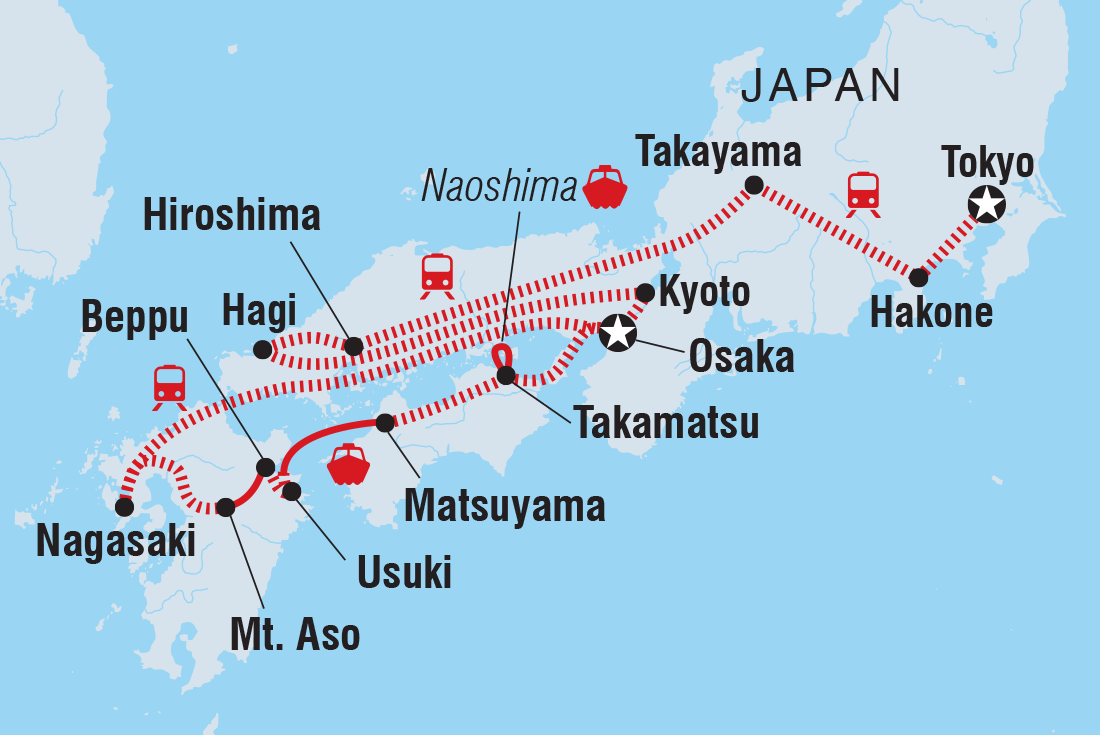


Konnichiwa! Welcome to Japan. Your adventure begins in Tokyo with a welcome meeting at 6 pm tonight. Bursting with contemporary urban culture, there are many sides of Tokyo to explore including fascinating museums, world-class shopping centres and neighbourhood backstreets lined with hole-in-the-wall eateries and bars. If you arrive early, maybe wander through the Hama Rikyu Garden, visit the Sumida Hokusai Museum or explore Ueno Park. After your meeting, maybe join your fellow travellers for dinner at a local restaurant.
This morning, travel to Hakone – a scenic hot spring town in the foothills of Mt Fuji. When you arrive, the day is free for you to explore at your own pace. Maybe visit the iconic red gate that stands in the water of Lake Ashi, visit Hakone Shrine, wander through modern sculptures and beautiful gardens at the Hakone Open-Air Museum or simply relax in one of Hakone’s numerous onsens (hot springs). Tonight, why not find a local restaurant for dinner and try black eggs, which are cooked in the hot springs of Owakudani, paired with a local beer.
This morning, hop on a boat across Ashinoko Lake, then ride the Hakone ropeway cable car to the top of the surrounding mountains. The area around the lake offers plenty of stunning views, and you may even catch a glimpse of Mt Fuji in the distance if weather conditions are clear. The afternoon is free to further explore Hakone’s mountain scenery and volcanic sites. Maybe visit the boiling sulphur springs of Owakudani, go for a walk through the hills of the famed grassland ecosystem of Sengokuhara or discover a collection of art at the Pola Museum of Art.
Travel by a local train, then a shinkansen towards Takayama – a charming Edo period town in the Japanese Alps, famous for its traditional inns, sake breweries and the Hida Folk Village. The village is your first stop – an outdoor museum where the traditional thatched-roof architecture unique to the area has been relocated to a mountain setting to preserve traditional Japanese culture. Discover the techniques used to build farmhouses that could withstand fierce winters and long periods of isolation due to snow-closed roads. The thick thatching kept in warmth, and the roofs were angled to minimise snow build-up. Each house is like its own self-contained museum, with displays of personal items and traditional tools. Tonight, maybe join your group for dinner at a local restaurant – your leader will have the best recommendations.
This morning, you’ll head to the markets in Gifu prefecture – these markets have been held for over 600 years and are known for their array of high-altitude vegetables. Browse the stalls of seasonal produce that’s brought in from the surrounding countryside and set up by local farm women from 7 am every morning. Look out for the unique local style of pickles, the bags of miso wrapped in leaves, genkotsu ame (soy bean candy), preserved fish, spices and the delicious marshmallow treat, owara tamaten. Then, head to Zenkoji Temple to learn how to make incense, which is believed to have purifying qualities. The rest of the day is free for you to explore the town at your own pace.
Travel by express train and shinkansen to Hiroshima today. When you arrive, you’ll visit Hiroshima’s Peace Park. The Genbaku (A-Bomb) Dome and Peace Memorial Museum stand testament to the fateful day in August 1945 when Hiroshima was chosen as target for the first ever wartime use of the atomic bomb. The dome was just metres from where the bomb detonated so it was able to retain its shape and the fact that it looks almost exactly as it did after the bombing has made it an enduring symbol of peace. The memorial park serves the same purpose, and has museums, memorials and monuments dedicated to the memory of victims. This evening, maybe head out with your leader for one of the city’s signature dishes for dinner – okonomiyaki (a savoury pancake of egg, cabbage, soba noodles and meat or seafood).
Today you'll make your way to the nearby island of Miyajima with its famous 'floating' torii gate. You might like to further explore the island by climbing to the top of Mt Miyajima (or hopping on the cable car instead) for 360-degree views of the Inland Sea. Keep your eyes out for inquisitive and hungry deer that roam the streets. You have the rest of the day free to enjoy some of the other sites. You could stop by the five-storied Hiroshima Castle, which originally dates to the 1590s. It was destroyed by the bomb but reconstructed in all its glory in the 1950s and now holds an informative museum. The wonderful Shukkeien Garden, with teahouses and waterfalls, is also a perfect place to decompress.
This morning, travel to Hagi – a coastal city known for its spring cherry blossoms and forested slopes of Mt Shizuki. When you arrive, discover the Hagi Castle Ruins. Then, join a walking tour around the Samurai District. Wander through the middle- and lower-class samurai houses and merchants, then walk down the widest street and main road where the feudal lord’s processions passed. Tonight, meet your homestay family and sit down to a home-cooked meal.
This morning, go with the flow and dive into the day to day life in Hagi with your host. Maybe check out their gardens and vegetables, visit the local supermarket for some shopping or walk around the neighbourhood. Each host will have their own plans. This afternoon, you’ll regroup and hop on a bike to explore the countryside and coastline of Hagi. But first, visit a local sake brewery and hear about the inspiring story of the local female sake brewer and how she’s broken the taboo and taken on the family business to continue brewing as one of the very few female sake brewers in the country. Then, continue your cycling tour through the countryside of Hagi, passing rice fields, along the coastline with a great view of the Sea of Japan. Later, head back to your homestay for another night with your host family.
Leave Hagi today and travel to Kyoto. Originally founded as Heian-kyo (‘tranquility and peace capital’) by Emperor Kammu in 794, Kyoto was the capital of Japan for over 1000 years, but the emperor and government are now in Tokyo. With over 2000 temples, shrines and gardens, there’s plenty to explore in this gorgeous city. Your leader will take you on a sunset walk through the Gion District (look out for wandering Geisha and Meiko!). Tonight, maybe find a local restaurant for dinner and try some traditional sushi or beef.
Start your day with a visit to the iconic Kinkakuji Temple, with its impressive Golden Pavilion, immortalised by Yukio Mishima's novel. Then, visit the red tori gates in Fushimi Inari. For the more active, hiking up the mountain following the red torii gates is a great way to enjoy the forest and the views over the city! Your afternoon is free to explore Kyoto at your own pace. Maybe head out in the evening with your group to celebrate the end of your adventure together.
This morning, travel to Osaka – the vibrant unofficial culinary capital, whose motto is 'Kuidaore' (eat until you drop). When you arrive, you’ll have free time to wander the trendy streets or pick up some lunch in Dotombori, before another welcome meeting at 6 pm tonight. After, maybe join your new travel companions for dinner at a local restaurant or wander the neon-lit streets for some street food and drinks.
Depart Osaka this morning and begin the journey west. Take the train across the bridge spanning the stunning Inland Sea and onto Takamatsu. This may be the largest city on the island of Shikoku (the smallest of Japan’s four main islands), but it's a beautifully unpretentious town full of history, top-notch food and interesting local art. Here, you'll visit Ritsurin Garden – one of the most beautiful gardens in the country. Dating back to the Edo period, it comprises several ponds and arched bridges designed around strolling paths, tea pavilions and historic trees, with a western garden in addition to the Japanese one. The garden also houses the Sanuki Folkcraft Museum, which displays a variety of ceramics and basketwork dating from the time of the Tokugawa shoguns.
Take the ferry this morning for a daytrip to the island of Naoshima, in the Inland Sea between Takamatsu and the mainland – famous worldwide for its modern art galleries, museums, avant-garde architecture and lovely natural setting. Explore the island by public bus or bicycle to take you between the galleries and installations. Wander between artworks, hear the sound of waves lapping at quiet coves and stumble upon the wonderful outdoor sculptures. Return to Takamatsu after a full day on the island, where you’ll have a free night.
This morning, take the train and head west to Matsuyama – one of Japan’s least discovered prefectures coined ‘the citrus state’ by the locals. When you arrive and have maybe picked up a mikan (mandarin) or two, visit the hill-top Matsuyama Castle with your group. This is one of Japan's most impressive surviving castles, sitting right in the middle of the city. Unlike most castles in Japan, this one has an exciting collection of artefacts inside, so take the chance to check them out and learn a little more about Matsuyama's feudal history while you’re there. This afternoon, you’ll have some free time to relax and unwind at the Dogo Onsen – one of the oldest bath houses in Japan – or if you’d prefer more exploration, maybe visit Ishiteji Temple – the 51st of the 88 temples that make up Shikoku’s 88 Sacred Temples circuit (Japan’s most famous pilgrimage route).
When you arrive around midday, take a public bus to the village to visit the local Shochu distillery, where you’ll get to see how Shochu (much loved in Kyushu, distilled from rice, barley etc)) is made, followed by a tasting of their finest.
Say goodbye to your hosts after a traditional home-cooked breakfast. Then, head to Beppu, famous for its variety of hot springs and onsens in Kyushu. Have lunch at a specialty restaurant that offers a unique dining experience where you can select the food you’d like, put the dishes in a steamer and watch as they’re cooked by the steam of the hot springs! This means your food will be infused with all the healthy minerals of the baths. Then, you’ll visit Jigoku (which translates to 'hell') – a collection of differently coloured steaming hot spring pools with different benefits. After, head to a local onsen for a relaxing soak. The evening is yours to spend your way in this relaxing city.
Today is a free day in Beppu. This is the perfect opportunity to take it easy in this onsen town, soaking your muscles and taking advantage of the benefits. Maybe explore other onsens in the city or alternatively, explore Beppu at your own pace. Maybe check out Jigoku Onsen Museum or take the Mount Tsurumi ropeway to the top for views overlooking the city. The lower station of the ropeway is a great spot for cherry blossom season! You might like to visit the Yawata Asami Shrine, Beppu Tower or take a daytrip out the nearby Yufuin town. The day is yours!
Today is all about chasing views! Hop in your private transfer this morning and head to Mt Aso, stopping at Ogi Rice Terrace along the way. Soak up the scenic landscape of Ogi between Mt Aso and the Kuju Mountains Range. When you’ve snapped some photos, head on to the Daikanbo Observatory for some excellent views of the five central peaks of the mountain. This viewpoint is also known as the Nehan-zo, or Nirvana Buddha, referencing the image of Buddha in repose. Stop for lunch, then get ready for a hike either on the moon-like Sunesenri trail to Nakadake Crater – the largest among the five craters of the mountain or to Kusasenri trail on the grassland, depending on crater's accessibility. After your hike, continue your journey to your accommodation for tonight – you’ll be staying in a traditional Japanese inn, right in the caldera formed from ancient volcano eruptions. Surrounded by rice fields, you’re in for a peaceful night here.
This morning, say goodbye to your scenic guesthouse and hop back on the train to Nagasaki, arriving in the early afternoon. Nagasaki was the sole port in Japan to trade with Dutch and Portuguese back in the 16th century, so city has a fascinating mixture of traditional Japanese and western architectural influence. Follow your leader on an orientation walk, then head over to Glover Garden – an open air museum where you can see some of the old foreign merchant houses. See the Former Glover House, the oldest wooden western style building, and learn about a unique part of history in Nagasaki. You then have a free afternoon, so maybe ask your leader where to grab dinner.
Wake up in Nagasaki this morning – the coastal city set on a natural harbour has surrounding hills with many viewpoints over the scenic hub. Visit the Peace Park and Atomic Bomb Museum for a sobering reminder of what happened on that dreadful day – the 9th of August 1945. You'll also have the chance to attend a talk given by a A-bomb survivor, no doubt a sobering and powerful talk. If you wish to reflect and explore further, there are some other interesting museums nearby worth visiting. You will have a day pass for the trams in the city, so take the time to explore Nagasaki in your free afternoon. Consider heading over to Dejima – this artificial island was once a Dutch trading post in the 17th to the 19th centuries (and the sole foreign presence in the whole country at one point). The 26 Martyrs Memorial, Oura Catholic Church, and Dutch Slopes also give you a glimpse into the life of the early Christians and European traders in Japan. The Hidden Christian Sites in the Nagasaki Region are also on the UNESCO World Heritage List. This evening, maybe slurp up some champon noodles (ramen, Nagasaki-style)!
Say goodbye to Kyushu and jump on the shinkansen back to Osaka. When you arrive this afternoon, soak up some free time to relax or explore. Tonight, why not head out for dinner and drinks with your leader and fellow travellers, to celebrate an amazing trip in southern Japan.
With no further activities planned, your trip comes to an end this morning. That doesn’t mean your time in Japan has to end! There is plenty to do and explore in Osaka, so if you’d like to extend your stay, just speak to your booking agent ahead of time.
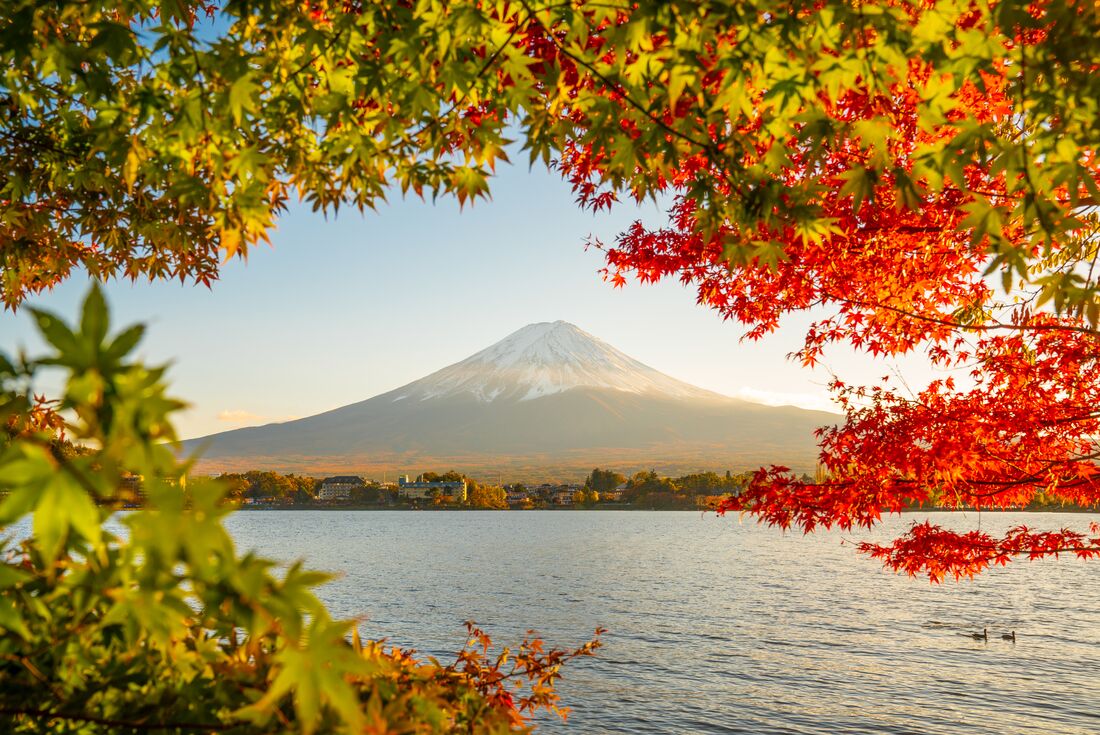
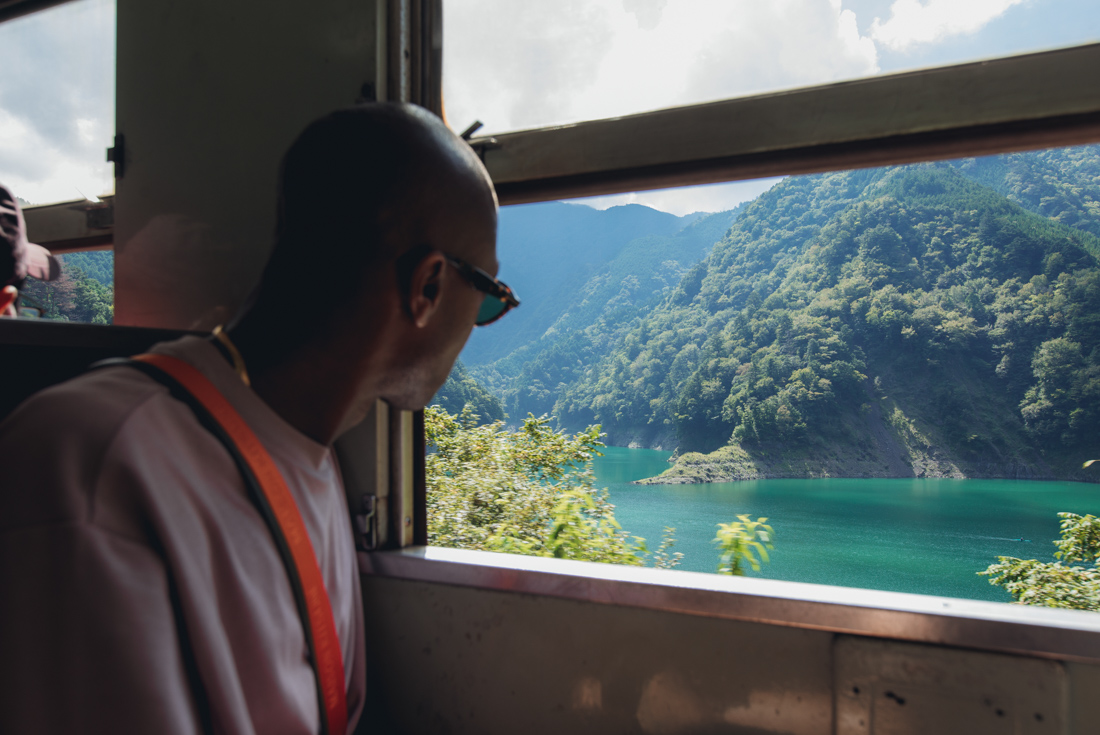
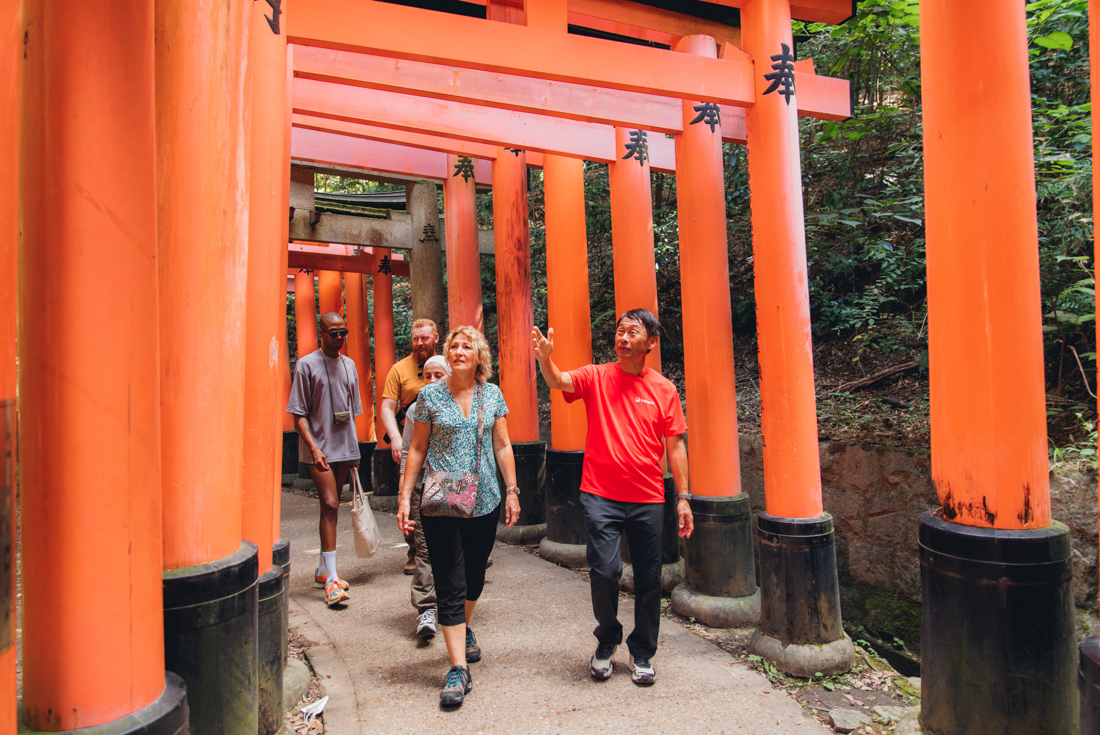
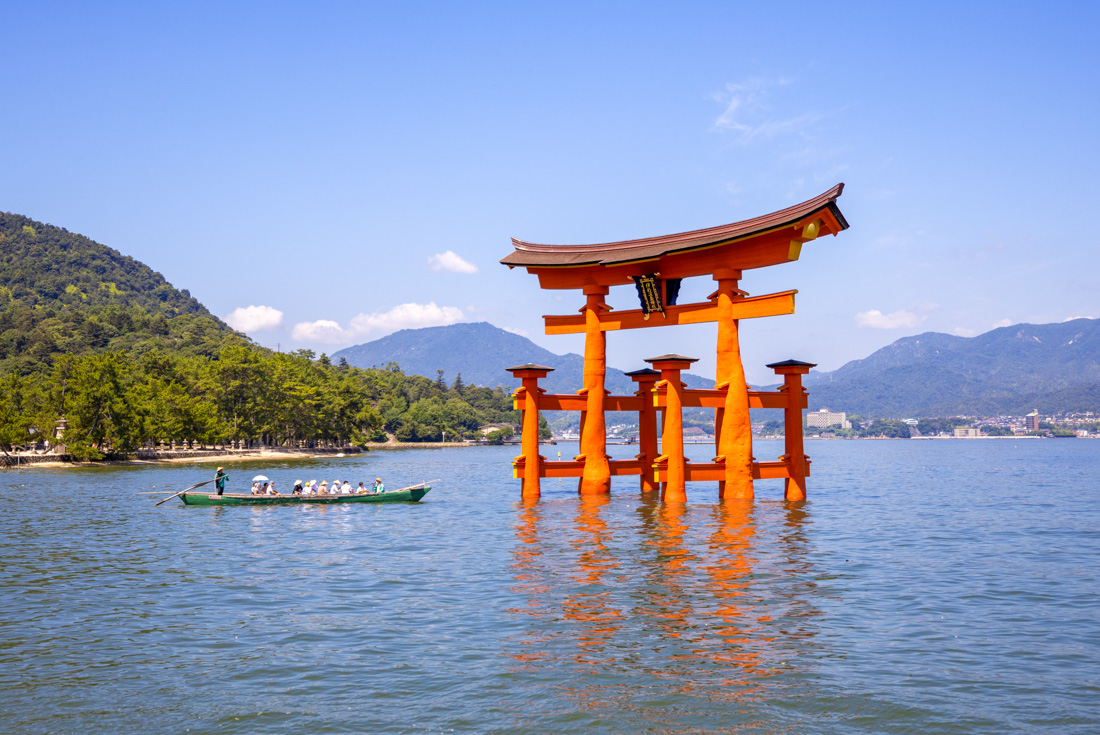
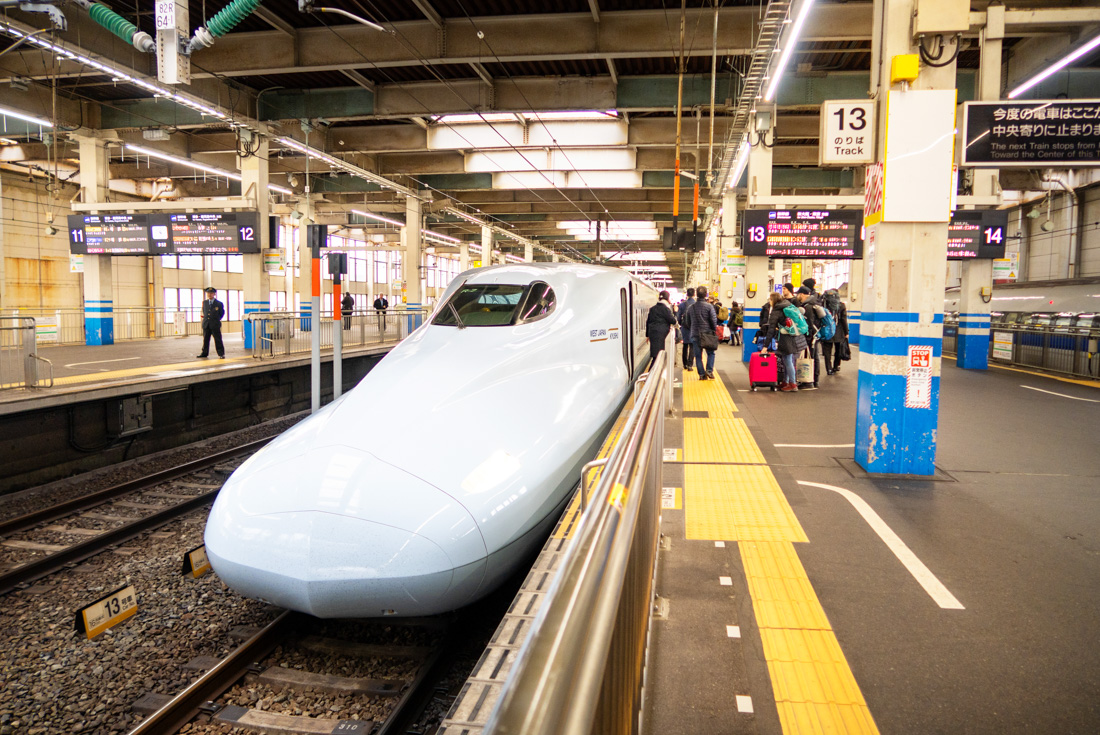
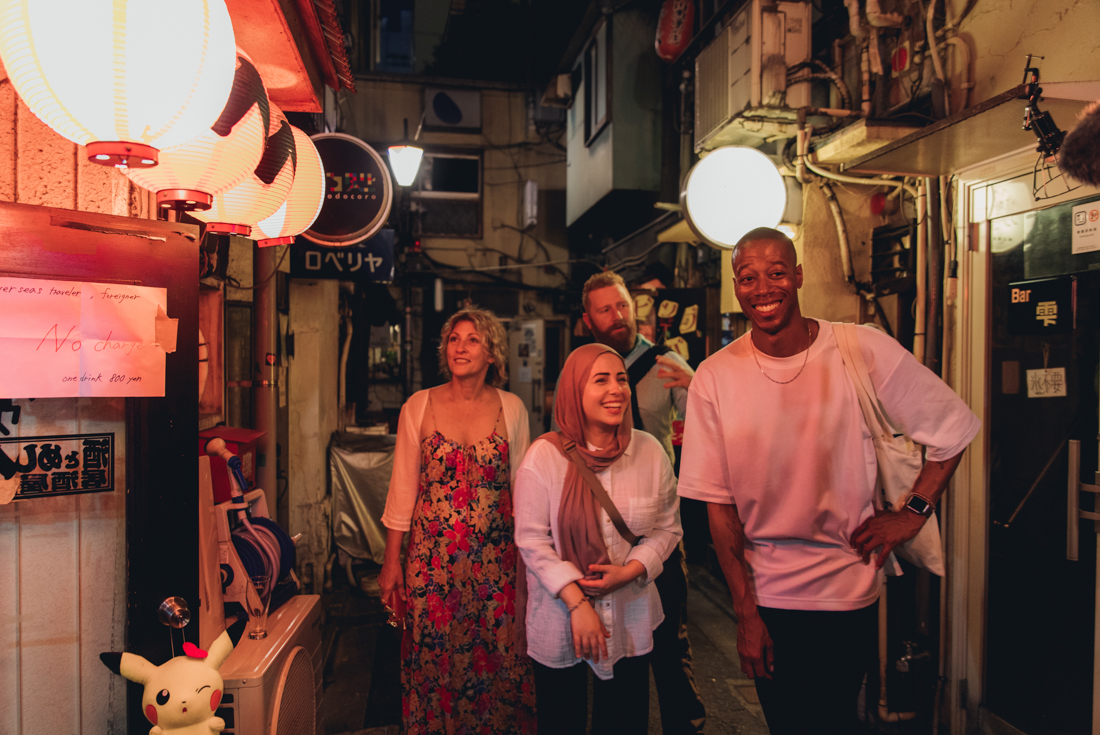
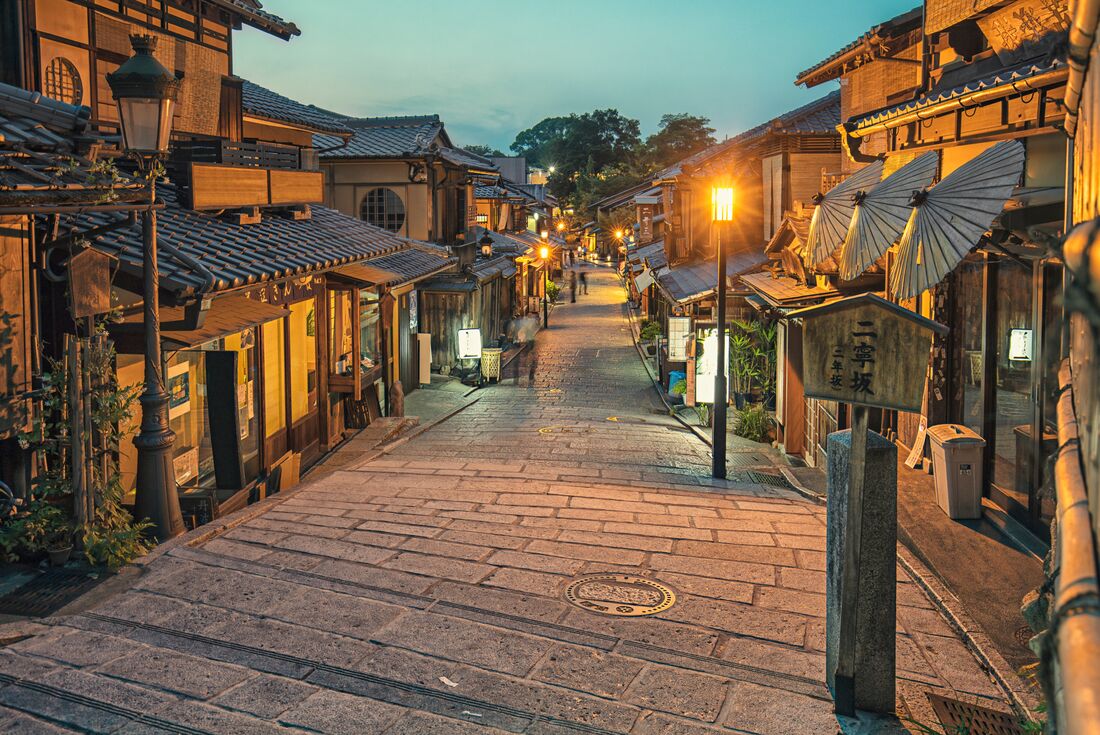
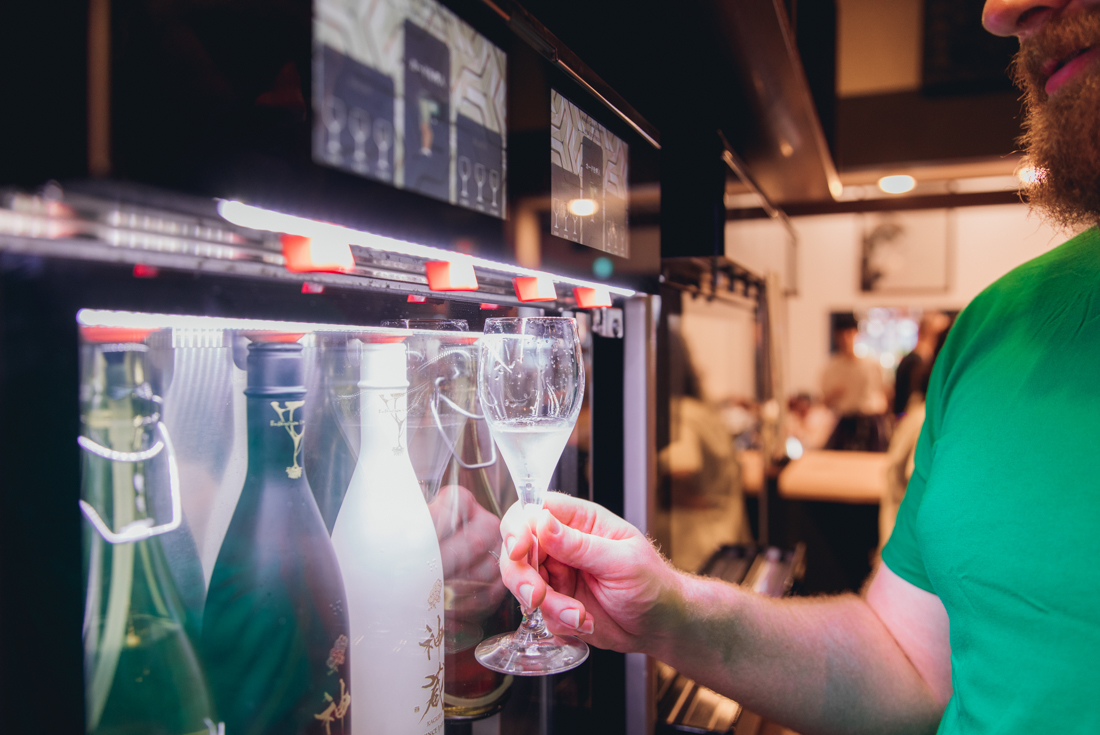
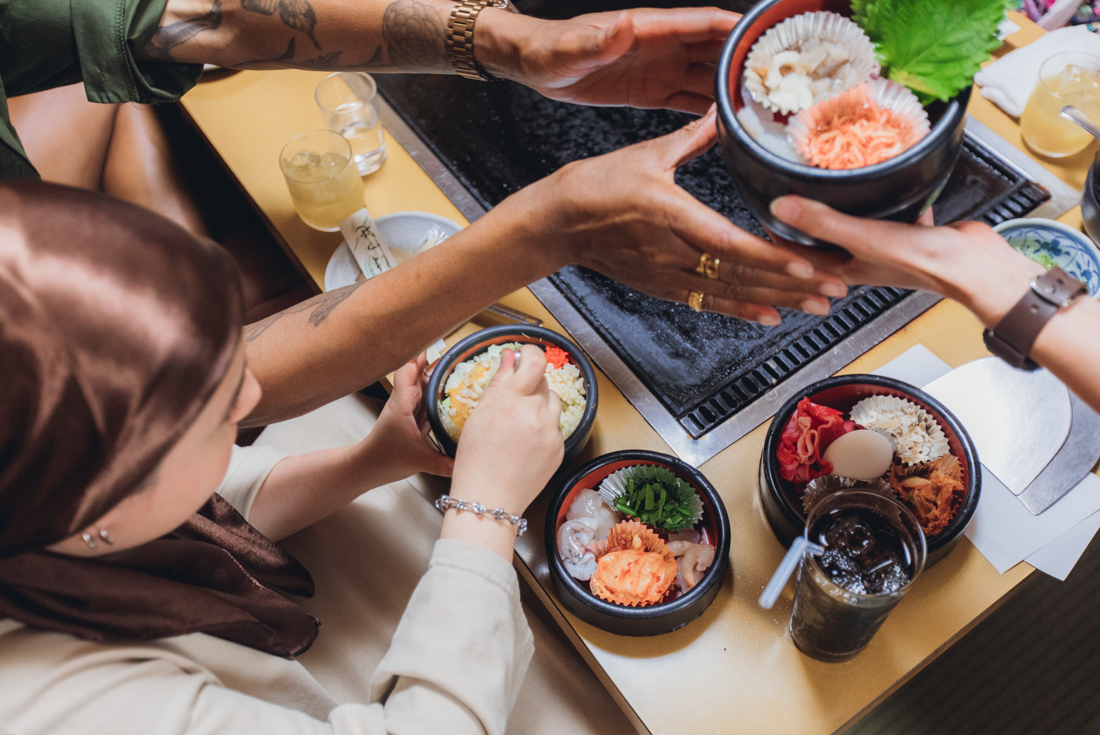
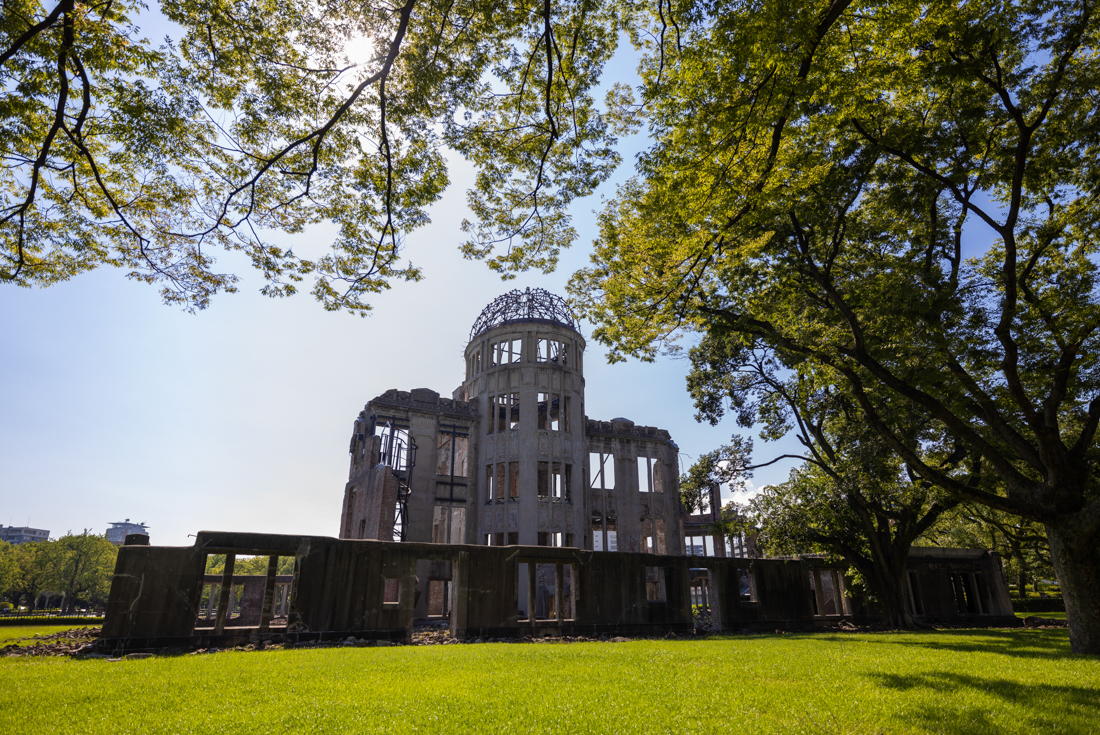
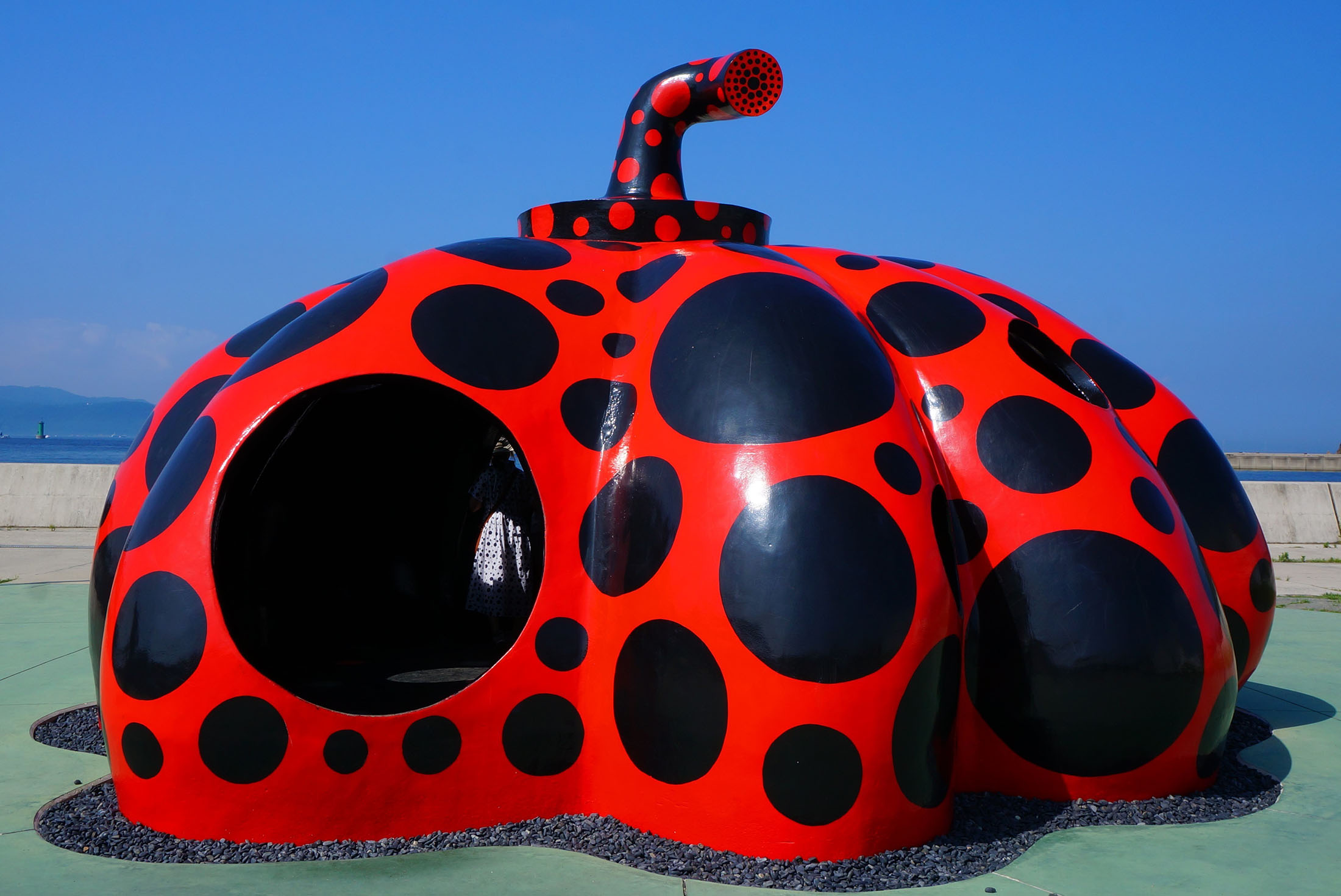


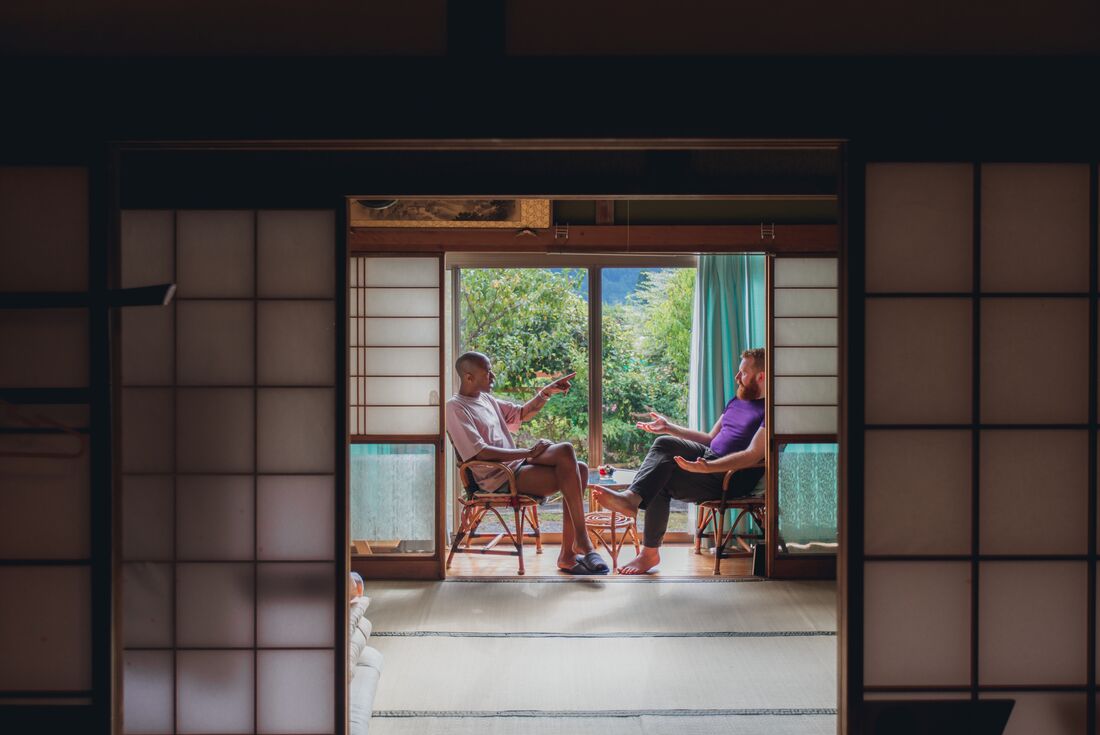
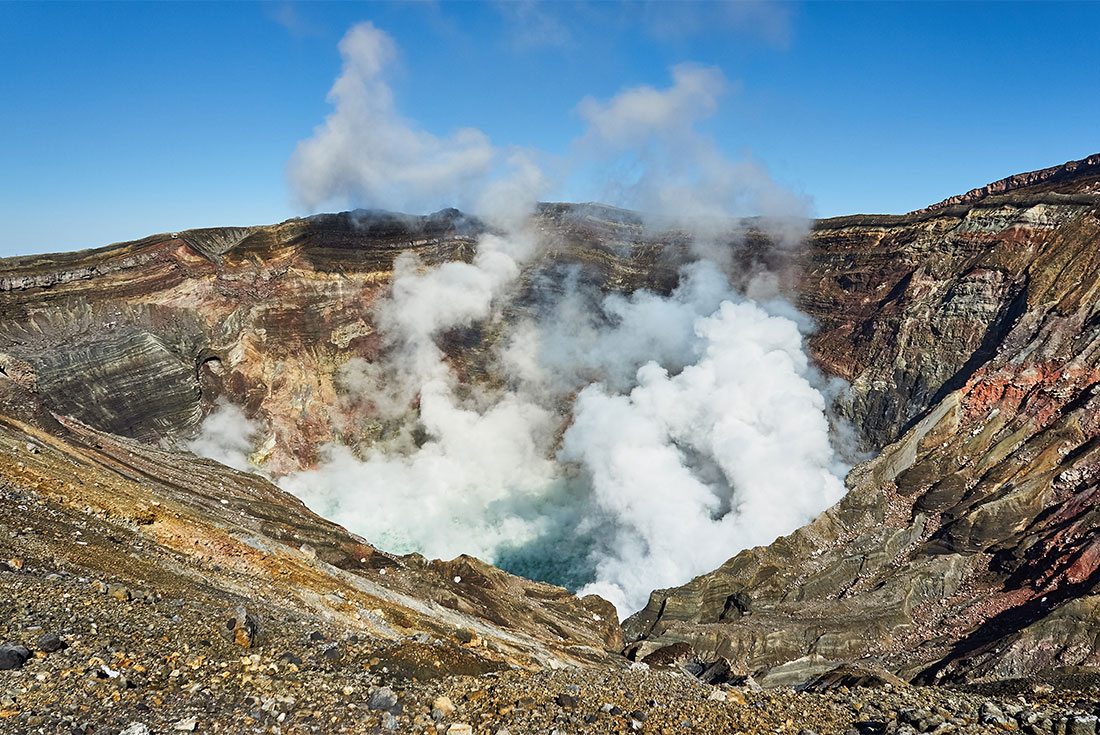
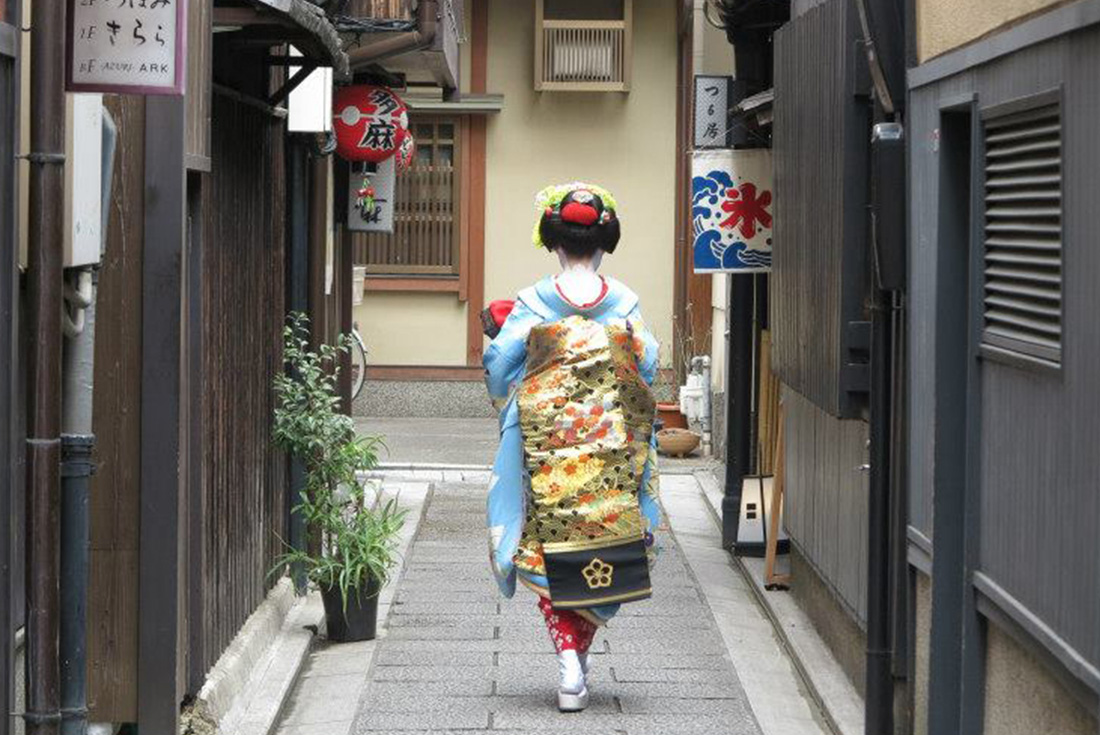
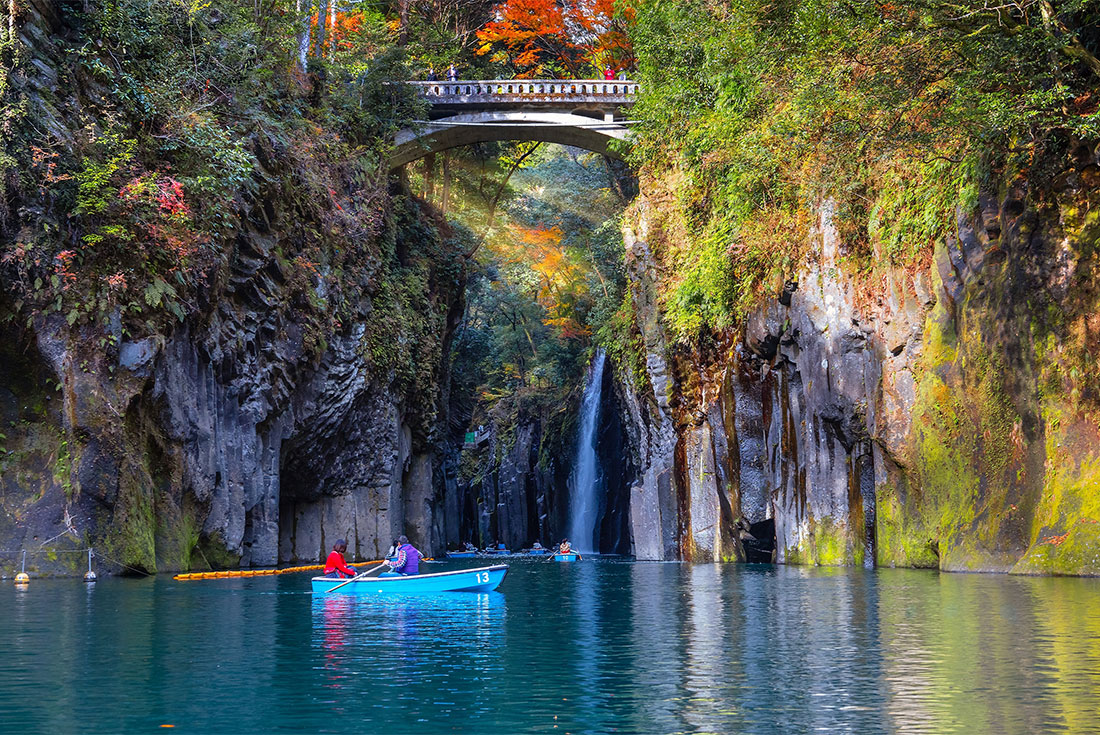
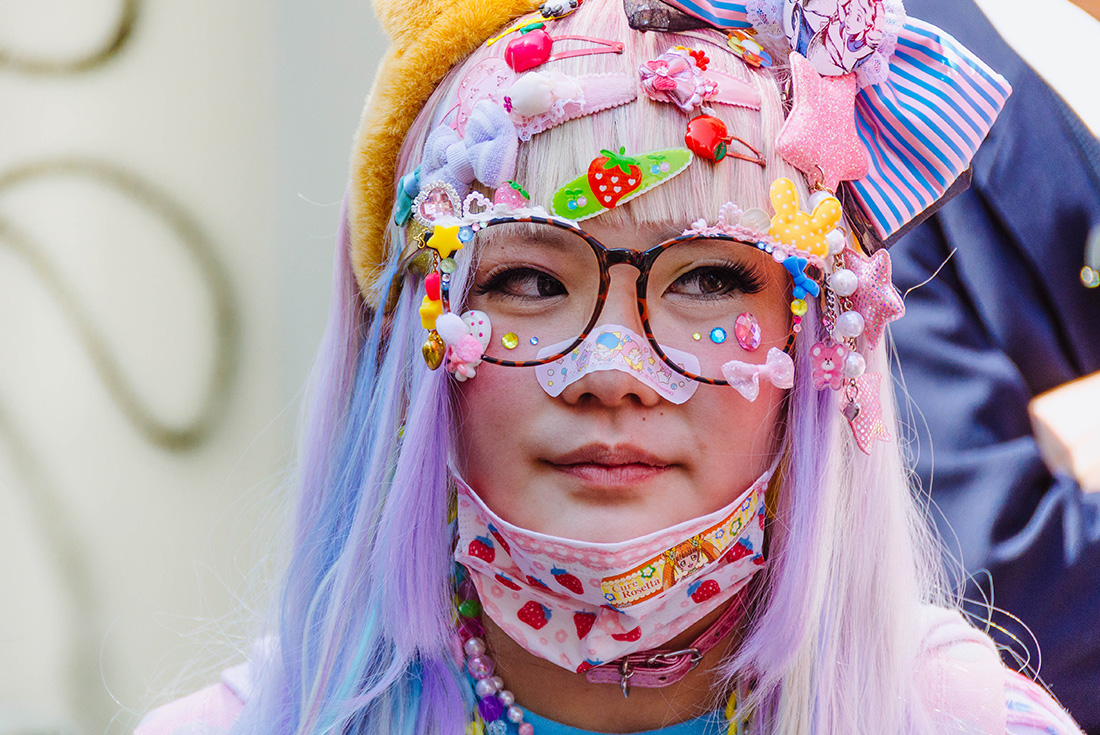
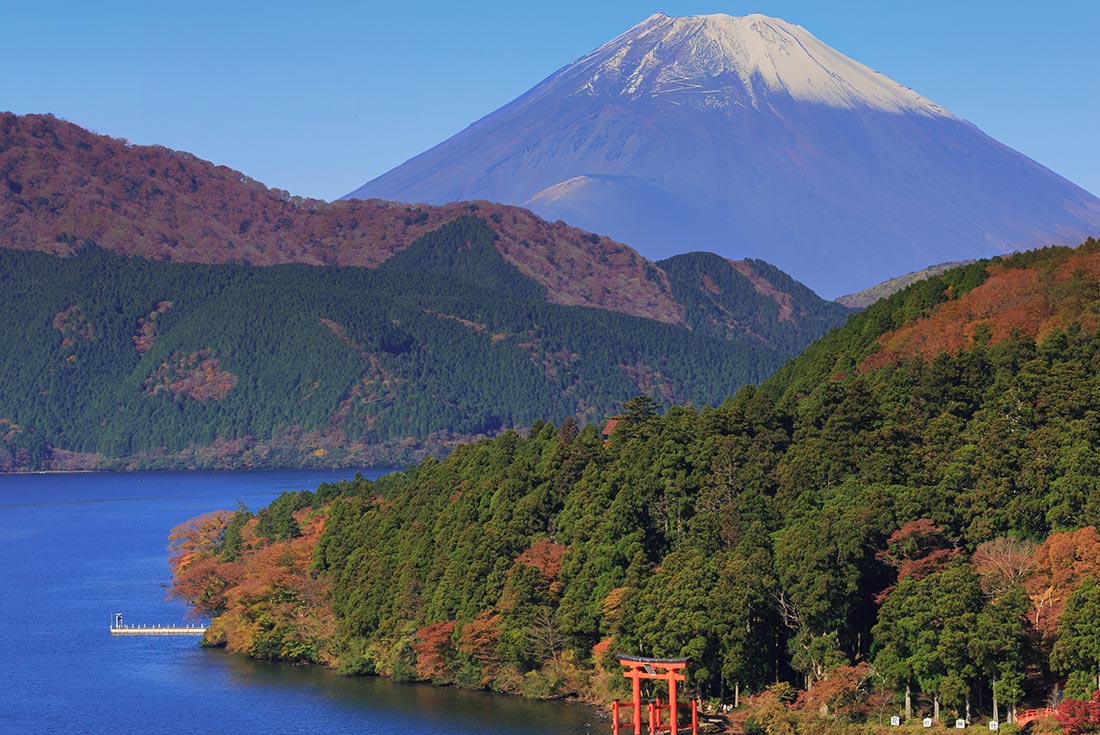
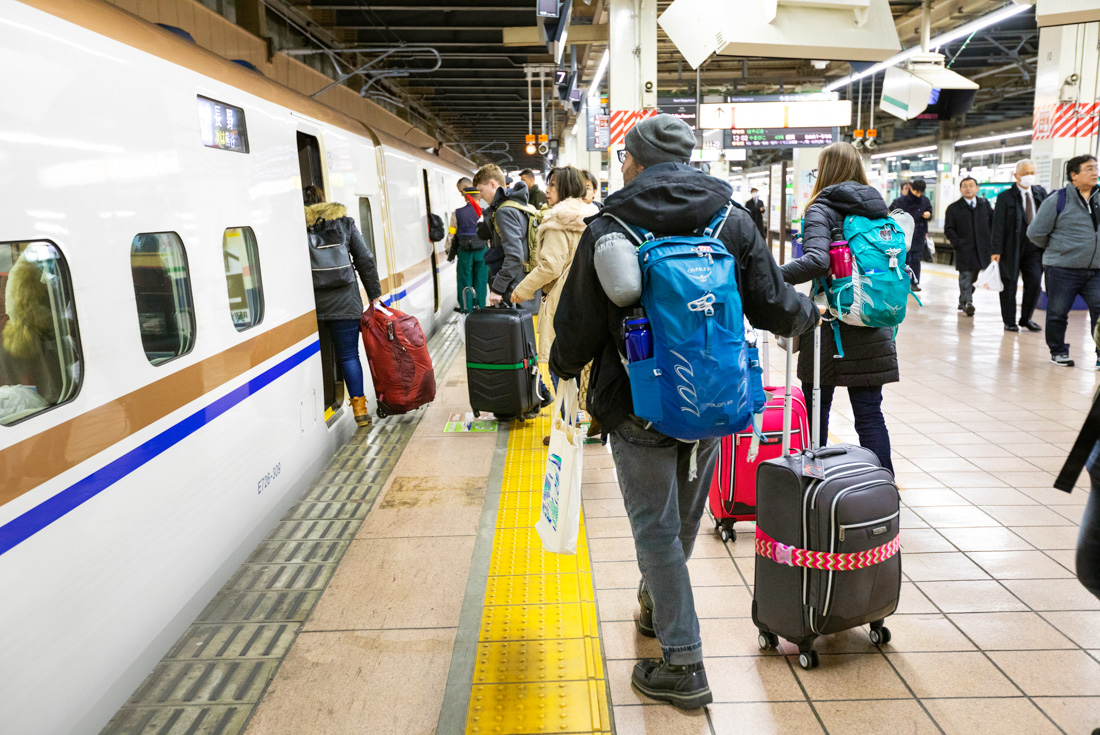
Hakone - Cable car/Ropeway
Hakone - Lake Ashinoko boat cruise
Takayama - Hida Folk Village
Takayama - Incense making in Zenkoji Temple
Takayama - Morning Market visit
Hiroshima - Peace Park & A - Bomb Dome
Hiroshima - Peace Museum
Hiroshima - Miyajima Island
Hagi - Hagi Castle and Samurai district walking tour
Hagi - Homestay and home-cooked meals
Hagi - Countryside cycling tour
Hagi - Homestay local experiences
Hagi - Female sake brewer visit
Kyoto - Gion District walk
Kyoto - Kinkaku-ji (Golden Pavilion)
Kyoto - Fushimi Inari-Taisha
Takamatsu - Ritsurin Garden & Sanuki Folkcraft Museum
Takamatsu - Naoshima day trip (ferry, public bus & bicycle)
Matsuyama - Matsuyama Castle
Usuki - Local Sake brewery visit and tasting
Usuki - Japanese home-cooking experience
Beppu - 'Hells' of Beppu (Jigoku)
Beppu - local onsen
Beppu - Steamed lunch (Beppu style)
Mount Aso - Nakadake Crater
Mount Aso - Sunasenri trail hike (or Kusasenri trail, weather and access dependent)
Mount Aso - Ogi Rice terraces
Mount Aso - Daikanbo Observatory
Nagasaki - Glover Garden
Nagasaki - Peace Park & Atomic Bomb Museum
Nagasaki - tram day pass
Nagasaki - A-bomb survivor talk
Soar high above Lake Ashi and (on a clear day) get a glimpse of the iconic Mt Fuji on a ride on the Hakone ropeway.
Stay in a countryside homestay, taking you off the beaten track to experience classic Japanese hospitality. Feast on home-cooked meals over conversations with your welcoming hosts and learn about rural life in Japan.
Explore the iconic temples of Kyoto and craft your own experience in this ancient capital during your free time, with recommendations from your local leader.
Watch the steam coming out of the ‘hells’ (hot spring pools in Jigoku) of Beppu, then cook and steam your food right in the hot spring steam, said to be rich with healthy minerals.
Discover the little town of Takayama that sits within the Japanese Northern Alps and take in the stunning view of the five peaks of Mount Aso from the Daikanbo Observatory.
ICI HOTEL Ueno Shin-Okachimachi, 4-23 Taito, Taito 110-0016 Tokyo Prefecture, Tokyo, JAPAN
The Bridge Hotel Shinsaibashi, 1-10-24, Nishishinsaibashi, Chuo-ku, Osaka-shi 大阪府大阪市中央区西心斎橋1-10-24, Osaka, Osaka, 542-0086, JAPAN, Phone: +81 649636501
1. We are currently unable to offer a single supplement, airport transfers or additional accommodation in Japan due to limited availability.
2. It is essential that you pack light and compact for rail travel in Japan. Luggage size restrictions apply. Please review the ‘Packing’ section of the Essential Trip Information for more details.
3. This trip is a combination of two trips. Please review the Itinerary for details of when your fellow travellers and leader will change.
While we always endeavour to provide the best possible holiday experience, due to the nature of travel and the areas we visit sometimes things can and do go wrong. Should any issue occur while you are on your trip, it is imperative that you discuss this with your group leader or local representative straight away so that they can do their best to rectify the problem and save any potential negative impact on the rest of your trip.
We recognise that there may be times when your group leader or local representative may not be able to resolve a situation to your satisfaction - if this is the case, please ask the group leader or local representative to speak to their direct manager.
You may also choose to provide details in your online feedback, which we ask you to complete within 30 days of the end of your trip. Please do be aware that it is very difficult for us to provide any practical help after the trip is completed, so informing us while still travelling will give us the opportunity to resolve the issue in real-time., For general contact details please use the following page: https://www.intrepidtravel.com/contact-us, In case of a genuine crisis or emergency, you can reach our local office on the numbers below:
, Available for phone call or WhatsApp call on +81 70 1771 5588
Japan is best explored on foot and by public transport. You’ll need to be fit enough to spend most of each day on your feet and able to handle your luggage as you navigate busy train stations. We recommend comfortable shoes and packing light., On this trip, you’ll spend some nights in homestays and traditional Japanese inns. These are a great taste of tradition and local life and you’ll sleep on the traditional tatami floor (futons and blankets on the floor mat), just like the locals do! The facilities will be shared., Double rooms in Japanese hotels can be smaller than you may be used to (e.g. 20 sqm). Every effort will be made to accommodate double room requests. However, during busy periods, there may be occasions when we are unable to offer a double room, so a twin room will be provided.
Soar high above Lake Ashi and (on a clear day) get a glimpse of the iconic Mt Fuji on a ride on the Hakone ropeway., Stay in a countryside homestay, taking you off the beaten track to experience classic Japanese hospitality. Feast on home-cooked meals over conversations with your welcoming hosts and learn about rural life in Japan. , Explore the iconic temples of Kyoto and craft your own experience in this ancient capital during your free time, with recommendations from your local leader., Watch the steam coming out of the ‘hells’ (hot spring pools in Jigoku) of Beppu, then cook and steam your food right in the hot spring steam, said to be rich with healthy minerals., Discover the little town of Takayama that sits within the Japanese Northern Alps and take in the stunning view of the five peaks of Mount Aso from the Daikanbo Observatory.
All group trips are accompanied by one of our group leader or local representative. The aim of the group leader or local representative is to take the hassle out of your travels and to help you have the best trip possible. Intrepid endeavours to provide the services of an experienced group leader or local representative however, due to the seasonality of travel, rare situations may arise where your group leader or local representative is new to a particular region or training other group leader or local representative.
Your group leader or local representative will provide information on the places you are travelling through, offer suggestions for things to do and see, recommend great local eating venues and introduce you to our local friends. While not being guides in the traditional sense, you can expect them to have a broad general knowledge of the places visited on the trip, including historical, cultural, religious, and social aspects. At Intrepid we aim to support local guides who have specialised knowledge of the regions we visit. If you are interested in delving deeper into the local culture at a specific site or location then your group leader or local representative can recommend a local guide service in most of the main destinations of your trip.
, Due to Japan's popularity it has been necessary to go outside our traditional sources for employing tour leaders. As a result, our passionate, professional and trained tour leaders may either be Japanese or long term foreign residents in Japan.
TRAVEL ADVISORIES & ALERTS
We recommend that you check your government's foreign travel advisory for the latest information about the destination before you travel. You will also need to ensure that your travel insurance covers you for all destinations and activities on your trip. We also recommend saving the phone number for emergency consular assistance for your government’s consulate in the destination/s you’ll be travelling. Links to travel advisories and any current travel alerts for our trips can be found here: https://www.intrepidtravel.com/travel-alerts
PERSONAL SAFETY
Ensure you have a secure method of carrying your passport, phone, credit cards and cash while travelling such as a money belt. Leave all other high value items, including jewellery, at home Use safety deposit boxes at hotels to store your valuables when available and ensure your luggage is lockable. Be aware of the risk of pick-pocketing and petty theft. Exercise caution when walking at night, don’t walk alone and stick to well-lit streets wherever possible. Be vigilant on public transport and look out for your fellow travellers. Take precautions such as carrying your bag in front of you and never leaving personal items unattended.
LGBTQIA+ TRAVELLERS
Intrepid welcomes all LGBTQIA+ customers on our trips, however we operate in parts of the world that are less accepting. We support LGBTQIA+ customers to travel to these destinations and are committed to ensuring they face no discrimination on any part of the trip we control. We recommend you visit Equaldex (https://www.equaldex.com/) and your government's foreign travel advice for LGBTQIA+ travellers when choosing your trip., JAPAN
Crime levels are low. It is generally safe to walk around at night and to travel on public transport, but you should maintain the same level of vigilance as you would at home and take sensible precautions. Reports of inappropriate touching or ‘chikan’ of female passengers on commuter trains are fairly common. The police advise that you shout at the perpetrator to attract attention and ask a fellow passenger to call the train staff. The Roppongi entertainment district of Tokyo is considered a higher risk area for crime.
PASSPORT
You’ll need a valid passport to travel internationally and most countries require your passport to have a minimum of 6 months validity, so remember to check the expiry date.
We need your passport information to get everything ready for your trip so it’s important that the information on your booking matches your passport exactly. Please take care to provide the correct details. We recommend carrying a copy of the photo page of your passport while travelling and leaving a copy at home with family or friends.
VISAS & ENTRY REQUIREMENTS
Many countries require a visa and obtaining the correct visa for your trip and any countries you may transit through is your responsibility. We recommend you check your visa requirements as soon as you have booked your trip. This will ensure you have time to prepare your documents and for your visa application to be processed. You can check the entry requirements for your nationality on your government's foreign travel advisories, consular websites or on our page here: www.intrepidtravel.com/visa-entry-requirements
Information not available.
Validity: 01 Jan 2026 to 31 Dec 2026
GENERAL HEALTH
All travellers need to be in good physical health in order to participate fully on this trip. For the safety and wellbeing of yourself and others, if you are unwell prior to travelling, please stay at home and contact us to make alternative arrangements.
When selecting your trip please make sure you have read through the itinerary carefully and assess your ability to manage and enjoy our style of travel. Please note that if in the assessment of our group leader or local representative a traveller is unable to complete the itinerary without undue risk to themselves and/or the rest of the group, we reserve the right to exclude them from all or part of a trip without refund.
You should consult your doctor for up-to-date medical travel information or for any necessary vaccinations before departure. We recommend that you carry a first aid kit as well as any personal medical requirements in their original packaging as they may not easily be obtained while travelling. If you are carrying medication, ensure you check your government's foreign travel advice for any local restrictions or requirements.
FOOD IN JAPAN
The Japanese daily diet contains gluten (ie. in flavourings such as soy sauce) and seafood (dashi, or fish stock, is the basis of most dishes, even vegetable ones), so we highly recommend that vegetarians, vegans and coeliacs do their own online research before travelling about some of the options that might be available to them. While our leaders will assist you whenever they can, there may be some included meals that are fixed in advance and not flexible, such as those included at ryokans, and cannot be modified for different diets. For those suffering from particular food allergies, your group leader will endeavor to disclose to their fullest knowledge the main ingredients in dishes being consumed. It is, however, still your personal responsibility to ensure that you do not ingest any foods to which you are allergic.
Food and drink are such a high part of Japanese culture. Here are some links to get your tastebuds tingling:
https://www.intrepidtravel.com/adventures/japan-convenience-store-food/
https://www.intrepidtravel.com/adventures/traditional-tokyo-alleyways-locals-guide/
https://www.intrepidtravel.com/adventures/eat-and-drink-like-a-local-in-japan/
https://www.intrepidtravel.com/adventures/vegetarian-vegan-travel-japan/
SPENDING MONEY
When it comes to spending money on the trip, every traveller is a little different. You know your spending habits better than we do, so please budget an appropriate amount for things like optional meals, drinks, shopping, optional activities, and laundry. Make sure you have read the itinerary and inclusions thoroughly so you know what is included in the trip price and what you may need to pay for while travelling. , JAPAN
The local currency in Japan is the Japanese Yen (JPY). Cash is still the most common form of payment in Japan. ATMs are commonplace, so obtaining cash is easy. Credit cards are generally accepted at departments stores and large restaurants., TIPPING
Tipping can be an appropriate way to recognise great service when travelling. While it may not be customary in your home country, it is an entrenched feature of the tourism industry across many of our destinations and is greatly appreciated by the people who take care of you during your travels. It is always best to avoid tipping with coins, very small denomination notes, or dirty and ripped notes, as this can be regarded as an insult rather than the goodwill gesture it is intended to be., YOUR GROUP LEADER OR LOCAL REPRESENTATIVE
Tipping your group leader or local representative is highly appreciated if you feel they’ve provided outstanding services throughout your trip. The amount is entirely a personal preference; however, as a guideline, the recommended amount is 4-7 USD or EUR per traveller per day (in a currency relevant to your destination). Of course, you are free to tip more or less as you see fit, depending on your perception of service quality and the length and involvement of your group leader or local representative on your trip., CONTINGENCY FUNDS
We try to plan for every eventuality, but there are still some things beyond our control. We reserve the right to change an itinerary after departure due to local circumstances or a Force Majeure Event. In such emergency circumstances, the additional cost of any necessary itinerary alterations will be covered by you. Please note we are not responsible for any incidental expenses that may be incurred as a result of the change of itineraries including but not limited to visas, vaccinations or non-refundable flights. Make sure you have access to an extra US$500 for emergencies (e.g. severe weather, natural disasters, civil unrest) or other events that result in unavoidable changes to the itinerary (e.g. transport strikes or cancellations, airport closures). Sometimes these things necessitate last-minute changes to enable our trips to continue to run, and as a result, there may be some extra costs involved. The recommended amount is listed in USD for the relatability of universal travellers, however, local currency may be needed once in the country to cover these costs.
LUGGAGE IN JAPAN
On this trip you will need to carry your own luggage for up to 30 minutes at a time. Train stations are quite complex and usually require climbing a lot of stairs, especially when doing a quick transfer from train to train. Elevators aren't always available and cannot accommodate many people at a time, so if you bring a suitcase, please ensure you are able to lift and carry it up and down stairs yourself without difficulty. Our ryokans allow suitcases, but you'll need to carry it onto the tatami floor in the room, instead of wheeling it. A backpack is often preferred by travellers for these reasons.
We recommend that you keep your main luggage weight around 15kg and certainly no more than 20kg.
LUGGAGE SIZE RESTRICTIONS ON JAPANESE TRAINS
Luggage allowances for train travel are calculated by adding the length, width and height together. We recommend your main piece of luggage does not exceed 159cm.
Luggage between 160cm and 250cm requires pre-booking additional luggage space for an additional fee. This can be difficult to secure given how busy Japan's rail system is. Luggage over 251 cm will NOT be permitted on Shinkansen trains.
If you have oversize luggage you will need to use luggage forwarding services. Additional charges will apply. Please speak to your leader if you need to utilise this service.
Japanese trains don’t have large luggage racks for big suitcases so it's best to pack as light and small as possible so that you are not blocking aisles or taking up extra seats.
DAY PACK
A day pack for carrying essentials when exploring destinations, as well as for any shorter overnight stays, will be useful.
SEASONAL CLOTHING
Weather in Japan varies greatly between summer and winter so be sure to check whether you’ll need a beanie and thermals or light cotton layers during your visit.
PACKING LIST
Below is a link to our ultimate packing list, a guide to get you started:, https://www.intrepidtravel.com/packing-list, WATER BOTTLE
Please bring your own water bottle to refill. Although it can be difficult to avoid bottled water when travelling, please use the water dispensers which are provided on some of our vehicles and at some of our accommodation. When unable to avoid bottled water, it is better to buy the largest available and distribute it into your smaller bottle for the day. Some travellers like to bring a bottle with its own filtration system or water purification tablets. If you are walking or trekking as part of your trip, you will need to carry at least 2 litres of water with you.
PEAK TRAVEL TIMES
Please be aware that while travelling during major national holidays (late Apr to early May) and peak seasons in Japan (Apr-May/Sep–Oct) are fascinating and exciting times to travel, there are also some downsides. There will be huge crowds at most tourist attractions and on all public transport. It's common for there to be difficulties in securing train tickets at our usual preferred times, hotels become overbooked, traffic jams and changes to the itinerary without prior notice can be necessary. If you decide to travel during peak periods come with a sense of adventure and flexibility and we are sure that your experience will still be rewarding and memorable.
Intrepid won't tolerate any kind of violence, harassment (whether physical, verbal or sexual), or disrespect toward fellow travellers, our teams or local communities.
To ensure the wellbeing of everyone on the trip, decisions made by your group leader are final.
Romantic relationships between travellers and group leader or local representative are not permitted while on trip.
Any behaviour that prevents your leader from continuing the itinerary as planned, breaks local laws or opposes any of these guidelines may result in Intrepid denying your booking or removing you from the trip.
If something concerns you during your travels, please speak to your group leader immediately. Alternatively, you can contact us on the emergency contact number detailed in the Problems and Emergency Contact Information section of this Essential Trip Information.
RYOKANS & MINSHUKUS
Japanese-style accommodation - ryokans or minshukus (traditional inn/guesthouse) involve sleeping on futons or matresses on tatami mat floors, with bedding often packed away during the day. Attached bathrooms/toilets will usually be very small and many will only have shared bathing facilities with certain hours, or times available for booking at reception. Your leader will explain etiquette involved in using the shared facilities. As this style of accommodation will often not have furniture (ie. chairs or beds) in the rooms, please consider choosing a different trip style in Japan if you have difficulty getting up from the floor or have knee, hip or back issues. Some establishments may have a curfew when travellers need to be back in the accommodation - this is usually around midnight. Please also be aware that you would normally be required to change to slippers when entering into your room in such properties. Extra fees will be charged if dirty marks are left on their beddings or towels that require professional cleaning. Some of such properties will only give 1 key for each room so you can leave the key at the reception so that you and your roommate won't have to conform to the same schedule when you are out exploring. , AVAILABILITY
The recent huge increase in tourism to Japan has put a lot of pressure on accommodation. On occasion, we may need to change accommodation from what is listed in the itinerary in order to operate your departure with minimal changes. , ONSENS
We like to encourage travellers to visit traditional Japanese 'onsens' while in the country as it is a quintessential local experience. In public onsens this means bathing naked with others of the same gender. While the experience can feel strange at first for some, most of our groups end up enjoying this activity. There is very specific etiquette for visiting onsens - your leader can give you some tips and instructions. Please be aware that travellers with tattoos may not be permitted to enter public onsens. Private onsens may also be available - talk to your leader for more information. See our guide to onsens here: https://www.intrepidtravel.com/adventures/japan-onsen-guide/
Information not available.
Travel insurance is compulsory on all our trips for those travelling internationally. We require that, at a minimum, you are covered for medical expenses, including emergency repatriation. If you are travelling within your home country or region, please confirm before travel that you are entitled to access the public medical system easily should an accident occur. We strongly recommend all travellers have a policy that also covers personal liability, cancellation, curtailment and loss of luggage or personal effects. For international trips, you will not be permitted to join the group until evidence of travel insurance and the insurance company's 24-hour emergency contact number has been sighted by your group leader or local representative.
If you have credit card insurance, your group leader or local representative will require details of the participating insurer/underwriter, the level of coverage, policy number, and emergency contact number, rather than the bank's name and your credit card details. Please contact your bank for these details prior to arriving in-country.
For travellers who reside within the European Union, Switzerland or the USA, the requirement to purchase travel insurance cannot be compulsory. However, the purchase of travel insurance is still highly recommended, and each country you visit may have its own specific entry requirements. For example, some mandate travel health insurance for all foreign travellers, regardless of their nationality. Travellers from the European Union, Switzerland or the USA who decline travel insurance when travelling outside their home region must sign a Travel Insurance Waiver Form at the Group Meeting, recognizing personal responsibility for emergency medical and repatriation costs should they arise.
For assistance with travel insurance or other services, please visit the link below:
, https://www.intrepidtravel.com/booking-resources/our-services
As you travel on a group trip you will be exposed to all the pleasures and maybe some of the frustrations of travelling in a group. Your fellow travellers will probably come from all corners of the world and likely a range of age groups too. We ask you to be understanding of the various needs and preferences of your group - patience with your fellow travellers is sometimes required for the benefit of everyone's travel experience. Remember too that you have responsibilities to the group. If you are requested to be at a place at a certain time, ensure that you don't keep the rest of the group waiting. We have found time and time again that the very best trips we operate are those where the dynamics within the group work well - this takes just a little effort on your part. Due to privacy reasons, we are unable to provide you with contact details and any personal information about your fellow travellers booked on your trip prior to departure., SOLO TRAVELLERS
On our trips, rooming is organised on a twin-share basis. We pair up solo travellers with another traveller of the same gender, as per the gender marker on each of their passports.
We also offer an optional single supplement on most trips for travellers who prefer to have their own room. This only applies to accommodation during the tour. Pre-trip and post-trip accommodation booked through us will always be on a single-room basis.
On a small selection of trips some accommodation will be open-gender and multishare, such as a felucca in Egypt or an overnight train in Vietnam. Please review the Accommodation section of the Essential Trip Information for details about your trip.
LGBTQIA+ TRAVELLERS
We strive to create a safe and inclusive environment for everyone. If your gender identity differs from what is indicated on your passport, please contact us so that we can discuss rooming options with you., A Single Supplement to have your own room is not available to purchase on this trip due to hotels having limited number of rooms and the high demand on availability.
ITINERARY CHANGES
Our itineraries are updated regularly throughout the year based on customer feedback and to reflect the current situation in each destination. The information included in this Essential Trip Information may therefore differ from when you first booked your trip. It's important that you review this information prior to travel so that you have the latest updates. Due to weather, local conditions, transport schedules, public holidays, political unrest or other factors, further changes may be necessary to your itinerary once in-country. Your group leader or local representative will keep you up to date with any such changes once your trip is underway and has the authority to amend or cancel any part of the trip itinerary if deemed necessary due to safety concerns.
, OPTIONAL ACTIVITIES
A selection of optional activities that have been popular with past travellers are listed in the day-to-day itinerary. This isn't an exhaustive list and should be used as a guide only for some of what might be available. Prices are approximate, are for entrance fees only, and don’t include transport to and from the sites or local guides unless indicated. All activities are subject to availability, and maybe on a join-in basis. It may not be possible to do all the activities listed in the time available at each destination, so some pre-planning for what you are most interested in is advised. When it's recommended that travellers pre-book these activities, look for a note in the Special Information section of the day-to-day itinerary. For most, they can either be organised independently on the day, or let your group leader or local representative know you are interested at the Welcome Meeting and they can assist.
Where activities are considered medium or high risk, we work with operators whose safety and credentials we have sighted and assessed. Although it is possible that you may find the same activity cheaper with another operator on the ground, we cannot vouch for the safety or quality of that operator. Medium and high-risk activities not listed above have not been assessed by us and as such our staff and group leader or local representative are unable to assist you with organising these activities. Activities that contravene our Responsible Travel policies are also not listed. Please remember that the decision to partake in any activity not listed is at your own discretion and risk.